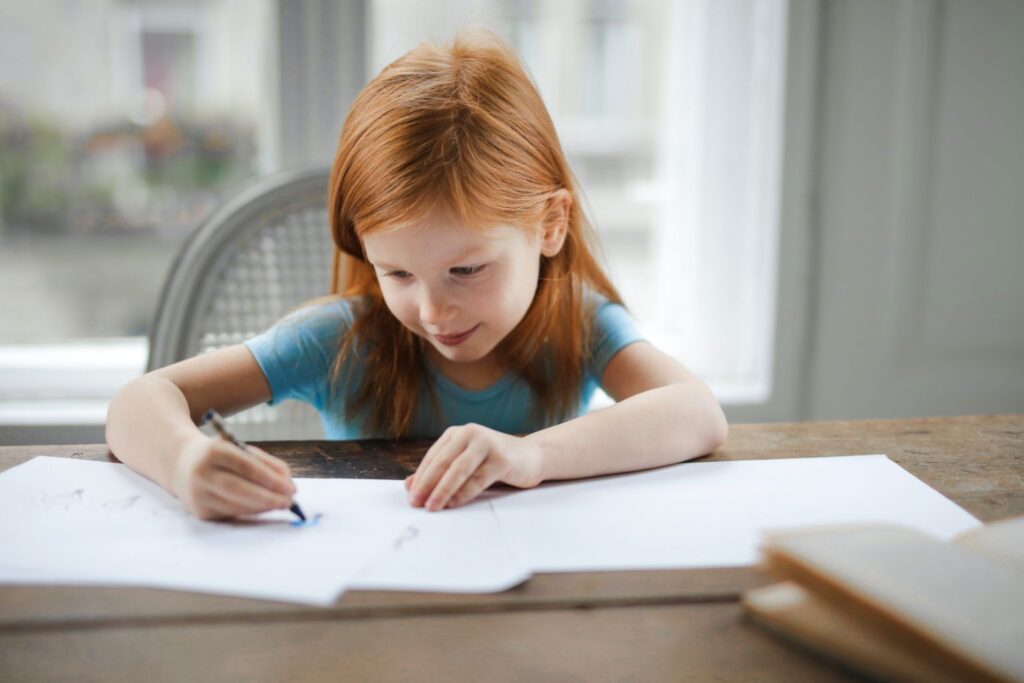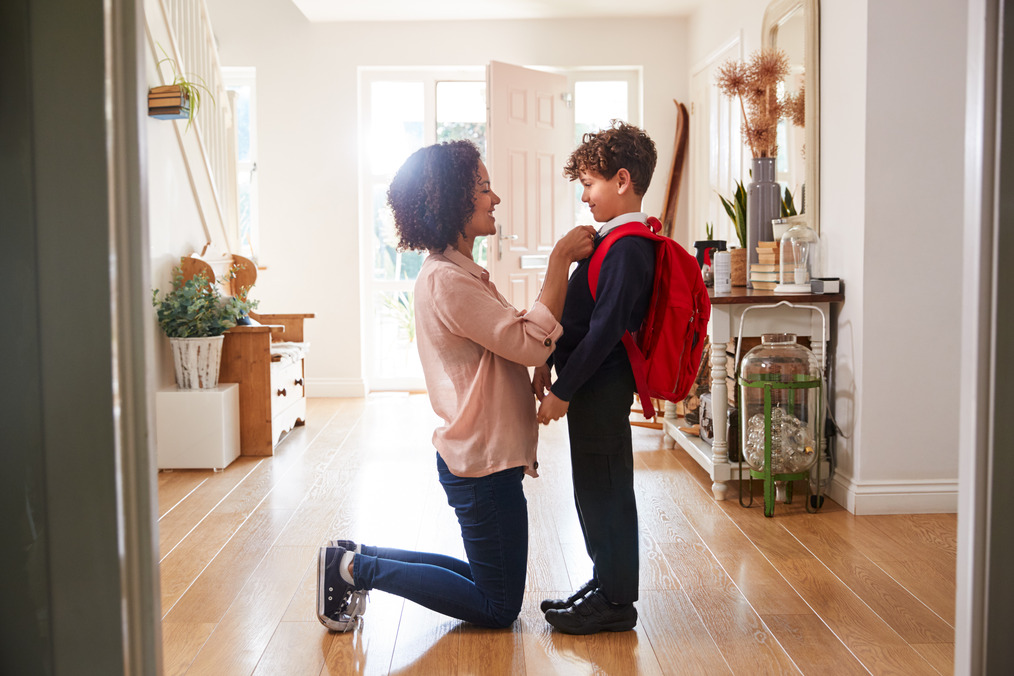Kindergarten Reading: Getting Your Kid Ready
Reading is one of the most important skills your child will develop, and getting an early start can make all the difference. Not only does it help with school, but it also boosts their language development, focus, and even creativity. Helping your child build early reading skills before they start kindergarten can set them up for success in both school and life.
As your child gets ready for kindergarten, giving them a head start with reading can ease the transition and make learning more fun. A child who feels confident in their ability to recognize letters, sounds, and even a few words will be better prepared to keep up with the pace of the classroom. Plus, kids who love books tend to do better across all subjects in school.
My goal is to guide you through simple ways to support your child’s early literacy journey. From daily reading habits to fun activities that make learning feel like play, you’ll find tips to help your child feel confident and excited about reading. With a little practice and patience, you can make reading a natural, enjoyable part of their everyday routine!
The Path to Reading: Understanding Key Milestones in Early Literacy
As your child is getting ready to enter kindergarten, you may wonder how to help them get ready for reading. Reading readiness is all about building the skills they’ll need before official reading instruction begins. But what does it really mean, and how can you tell if your child is ready? Let’s break it down in a way that makes sense and explore the key literacy milestones to look for as your child prepares for kindergarten.
What is Reading Readiness?
Reading readiness is when your child is ready to start learning how to read. This doesn’t mean they need to be reading fluently before kindergarten—far from it! It’s about making sure they have the building blocks they need, like recognizing letters, understanding that words on a page have meanings, and hearing the sounds that create words. Every child moves at their own pace, so the goal is to help them feel comfortable and confident as they begin their reading journey.
You might notice your child showing interest in books, recognizing letters, or pointing out familiar words. These are all great signs of reading readiness! The more curious they are about letters and sounds, the more prepared they’ll be when formal reading lessons start in school.
Milestones in Early Literacy Development
While kids develop at different speeds, there are common milestones in early literacy that can give you an idea of how your child is progressing. Here are a few key stages to watch for:
1. Listening and Speaking
Before your child ever picks up a book, they’re developing literacy skills through listening and speaking. From those first babbling sounds to holding simple conversations as toddlers, this verbal communication helps them understand the link between spoken and written words. Encourage your child to talk, ask questions, and be sure to introduce new words whenever possible—it all plays a part in reading readiness.
2. Print Awareness
Around age 3 or 4, kids start developing something called print awareness. This means they begin to realize that those funny-looking letters and words on a page have meaning. You might notice your child pointing out words they see around them, like on cereal boxes, signs, or their favorite books. This is an early sign they’re understanding how print works. You can support this by pointing out words in everyday life and reading aloud together.
3. Letter Recognition
Recognizing letters is one of the most exciting milestones in early literacy. By the time your child is 4 or 5, they’ll probably be able to identify many letters of the alphabet and know that each letter makes its own sound. This is a HUGE step toward reading! You can help by playing simple games where they match letters with their sounds or by singing the alphabet song together.
4. Phonological Awareness
Phonological awareness is just a fancy way of saying your child is able to hear and play with the sounds in words. Think of it like when your child rhymes words or claps out syllables in a word. These skills are important for connecting sounds with letters when they begin reading. Try rhyming games or clapping out the beats of words to make this learning fun.
5. Story Comprehension and Retelling
Even before they can read, many kids love listening to stories. By age 4, your child might start retelling simple stories in their own words, showing they understand what’s happening in the book. This kind of comprehension is so important for later reading success. As you read together, ask your child what they think will happen next or how the characters are feeling—this helps them engage more deeply with the story.

Building Foundational Skills at Home
As your little one prepares for kindergarten, helping them build early reading skills at home can give them a head start. The great news is it doesn’t have to be complicated! With some fun, simple activities, you can nurture their love for books, strengthen their language skills, and set them up for reading success. Let’s dive into how you can prepare your child for kindergarten by focusing on some key foundational skills.
Encouraging a Love for Books
One of the best ways to get your child excited about reading is by making books a natural part of their everyday life. Create a print-rich environment at home by surrounding them with books, labels, signs—anything that connects words with meaning. You don’t need a fancy home library; just having a few books on hand or a cozy reading corner in their room can make all the difference. It shows them that reading is fun and something to explore on their own.
Daily reading is also really important. 10 to 15 minutes a day can work wonders for your child’s reading readiness. Reading regularly helps your child get familiar with letters, words, and how language flows. Bedtime stories are a classic for a reason, but you can also read together during quiet time in the afternoon. The important thing is to keep it fun and let your child pick books they’re excited about, whether it’s a favorite storybook, a rhyming book, or a book about dinosaurs!
Fostering Phonological Awareness
Phonological awareness—being able to hear and play with the sounds in words—is a key part of learning to read. You can encourage this at home in playful ways, such as teaching letter sounds through songs and rhymes. Singing the alphabet song or practicing letter sounds during everyday moments, like when you see letters on signs, can help your child connect sounds with letters.
Phonemic games are another fun way to build this skill. Try clapping out syllables in words, playing rhyming games, or playing “I Spy” but with sounds, like “I spy something that starts with the ‘b’ sound.” These simple activities turn learning into playtime, keeping your child engaged and helping them develop important skills without feeling like it’s work.
Building Vocabulary and Language Skills
Conversations are a great way to build your child’s vocabulary, and they’re easy to fit into daily life. Talk to your child as you go about your day—whether it’s while cooking dinner, describing what you see on a walk, or chatting about their day at preschool. Even if it seems like casual talk, it introduces them to new words and ideas. Don’t be afraid to use “big” words, either! Kids pick up more than we realize, and it helps grow their vocabulary.
Reading together also helps build language skills, but don’t just stick to the words on the page. Ask your child questions as you read, like “What do you think will happen next?” or “Why do you think the character feels that way?” This gets them thinking about the story, boosting their comprehension and encouraging them to express their own thoughts.
Storytelling is another fun way to help with language development. You can take turns creating a story together, or your child can make up a story based on pictures or their toys. This helps them practice structuring their thoughts and builds their imagination, which is a big part of learning to read and write.

Practical Tips for Parents
As your child prepares to enter kindergarten, nurturing their reading skills can set them up for success in school and beyond. But how can you make this process enjoyable and effective? Here are some practical tips to help you foster a love for reading, support fine motor skills, and introduce sight words in a fun way.
Making Reading Fun
One of the best ways to get your child excited about reading is to make it a fun and enjoyable experience. Start by creating a cozy reading nook at home where they can curl up with their favorite books. Fill it with colorful pillows, blankets, and, of course, a variety of books that cater to their interests.
Choose stories that are engaging and interactive. Picture books with vibrant illustrations, rhymes, and repetition can captivate young readers. Here are some fantastic titles to consider:
- Don’t Let the Pigeon Drive the Bus! by Mo Willems – A humorous story that encourages kids to interact with the book and shout “No!” at the pigeon’s antics.
- The Book with No Pictures by B.J. Novak – A clever story that proves you don’t need pictures to make a book entertaining; kids love the silly words and phrases.
- Where’s Spot? by Eric Hill – An interactive lift-the-flap book that invites children to help find Spot the puppy.
- Chicka Chicka Boom Boom by Bill Martin Jr. and John Archambault – This fun and rhythmic story about the alphabet will have your child singing along.
- Brown Bear, Brown Bear, What Do You See? by Bill Martin Jr. and Eric Carle – A beautifully illustrated classic that teaches about colors and animals through repetition.
- Pete the Cat: I Love My White Shoes by James Dean and Eric Litwin – A fun, musical story about staying positive through challenges, perfect for young readers.
- The Gruffalo by Julia Donaldson – A charming tale about a clever mouse that encounters various animals in the woods, featuring rhyming text and captivating illustrations.
- Press Here by Hervé Tullet – An interactive book that engages children as they follow simple instructions, leading to a fun and playful reading experience.
- The Very Hungry Caterpillar by Eric Carle – A classic that teaches about counting, days of the week, and the life cycle of a butterfly through colorful illustrations and simple text.
You can also incorporate reading into daily routines. For example, read the labels on food packages while you cook or let your child help read signs during walks. This helps them see reading as a fun and essential part of everyday life. Don’t forget to celebrate small reading milestones. If they finish a book, consider a special treat or a fun outing as a reward!
Supporting Fine Motor Skills
Developing fine motor skills is essential for early literacy as it helps with writing, drawing, and manipulating books. You can support these skills through various activities that are both enjoyable and beneficial. Simple tasks like coloring, cutting, and pasting can strengthen the small muscles in your child’s hands, preparing them for writing.
Incorporate activities like playdough or clay modeling, which allow them to practice their grip and dexterity. Encourage your child to create letters or shapes with playdough—this hands-on approach makes learning letters feel tangible and fun.
Additionally, consider using letter tracing worksheets or writing in sand or shaving cream. These activities not only support fine motor skills but also give your child a chance to explore letters in a creative way. As they engage in these activities, they’ll feel more confident when writing and reading.
Teaching Sight Words
Sight words are common words that children should recognize by sight without needing to sound them out. These words often appear in early reading materials and include words like “the,” “and,” “is,” and “to.” Introducing sight words can be done in a fun and engaging way, making it easier for your child to recognize them in books.
Start with a few sight words each week. You can create flashcards with colorful images or pictures to represent each word. Turn learning into a game by playing “sight word bingo” or “memory” with the flashcards. You can also incorporate sight words into daily life by labeling objects around the house—like “door,” “table,” and “window”—so your child begins to associate these words with their meanings.
Another great way to teach sight words is through songs and rhymes. There are plenty of fun educational songs available online that focus on sight words. Singing these together can help reinforce their recognition while making the learning process enjoyable.
Conclusion
Preparing your child for reading success before kindergarten is an important step that can set the foundation for their future learning. By nurturing their love for books and engaging them in fun reading activities, you’re not just teaching them how to read; you’re helping them develop a lifelong passion for stories and knowledge. Early literacy skills are essential for success in school and can influence a child’s confidence and enthusiasm for learning as they grow.
Remember, every child is unique and progresses at their own pace. Some kids may take to reading like a duck to water, while others may need a little more time to find their groove. That’s perfectly okay! The most important thing is to create a supportive and encouraging environment where your child feels excited about reading. Celebrate their progress, no matter how small, and make reading a joyful experience. This way, you’ll help them form positive associations with books and learning that will last a lifetime.
So, why not start building those reading habits today? You can easily incorporate reading into your daily routine. Set aside a few minutes each day to read together, whether it’s during bedtime, after lunch, or whenever you have a quiet moment. Choose engaging books that match your child’s interests, and don’t be afraid to revisit their favorites. Create a cozy reading space that invites them to explore the world of books at their leisure.
You can also involve your child in fun reading-related activities, like creating a story together or exploring new words during everyday conversations. These small but meaningful actions can make a big difference in preparing them for a smooth transition into kindergarten.
As you embark on this reading journey together, remember that the love for reading you cultivate now will serve your child well throughout their educational journey. So grab a book, find a comfy spot, and enjoy the adventure of reading together!

